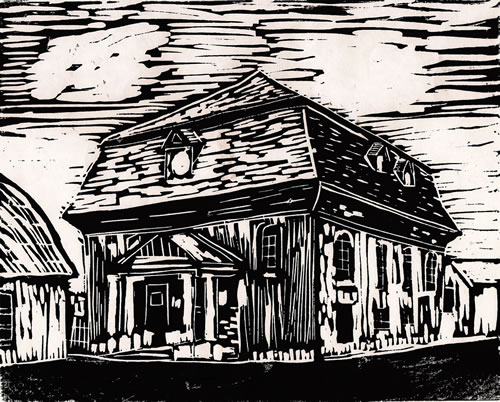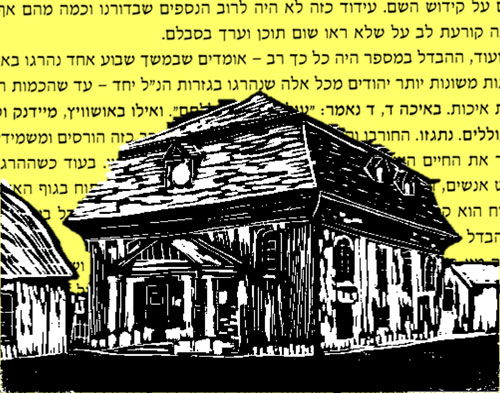Lost Treasures: The Wooden Synagogues of Eastern Europe The Artwork of Bill Farran
Kórnik, Poland - Original Linocut
Kórnik, Poland - Black & White
Yiddish name: Kurnik
Jewish people first settled in the small town of Kórnik in the Poznan province during the early 17th century.
The town’s wooden synagogue was constructed in 1767 by Hillel Benjamin of Lasko. It was built in the classical Tuscan style which was common to the local manor houses. The carved Torah Ark was older than the structure and was brought over from another synagogue. The ceiling and the walls were covered with colorful paintings, as was typical of wooden synagogues.
Kórnik became part of Prussia after the Partition of Poland. The largest recorded Jewish population of Kórnik was in 1840 when 1,170 Jews made up 43 percent of the population. Kórnik experienced a steady decline in Jewish population as Jews moved to larger cities in Germany, Europe, and America.
By 1939 there were only 36 Jews remaining in Kórnik. The synagogue of Kórnik was burned down by the Germans during World War II.
Purchase a print
Original linocut prints are 8x10 inches, and are available either unmatted or in an 11x14 matte.
I also offer matted 5x7 digital prints. These prints are created from high-res digital images and come in an 8x10 matte.
For this synagogue I have created an additional digital print, with Hebrew lettering in the background. These prints are also created from high-res digital images and come in an 8x10 matte.



